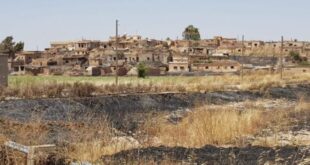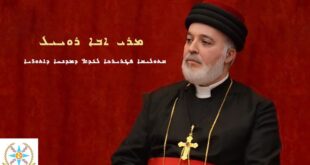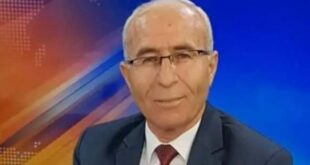VATICAN CITY – zenit — There are signs of new hope that relations with the Assyrian Church of the East are advancing, says Cardinal Walter Kasper, president of the Pontifical Council for Promoting Christian Unity.
Cardinal Kasper met Thursday with Catholicos Patriarch Mar Dinkha IV, head of the Assyrian Church of the East. The patriarch had met earlier with Benedict XVI. On that occasion, the cardinal granted this interview with us, in which he summarizes the situation of relations between the Vatican and the Assyrian Church of the East.
Q: We seldom hear of the Assyrian Church of the East. Could you say some words on the past and present situation of this particular Church?
Cardinal Kasper: The Assyrian Church of the East is one of the smaller Wastern Churches, at least in the number of the faithful. Its historical roots are in the missionary activity of the early Church, when it moved eastward, in the direction of Mesopotamia and former Babylonia, outside the Roman Empire. In present day geography, we can say that Iraq is the original homeland of most Assyrian faithful. More recently, due to successive periods of persecution and hardship, a large majority of Assyrian faithful migrated to the West. Nowadays the Assyrian Church has dioceses in Europe, the United States, Canada and Australia. The patriarch himself has his residence in Chicago. Like other Churches in and from the Middle East, the Assyrian Church of the East faces many challenges. There is the dramatic situation in Iraq, where Christians belonging to various Churches have their very existence seriously threatened. Assyrian faithful are also scattered in different parts of the world, and this does not allow for pastoral service to be assured everywhere by their own priests. Benedict XVI has mentioned some of these challenges in his address to Patriarch Mar Dinkha IV. He also insisted on the need for and the possibility of further cooperation between Catholic and Assyrian faithful, wherever they live together.
Q: In his address to Patriarch Mar Dinkha IV, Benedict XVI also referred to the positive results of the dialogue between the Catholic Church and the Assyrian Church of the East. How did the relations between the Assyrian Church of the East and the Catholic Church develop?
Cardinal Kasper: In 1994, an important Common Christological Declaration was signed by Pope John Paul II and Patriarch Mar Dinkha IV. This declaration clarified some doctrinal controversies between the Catholic Church and the Assyrian Church of the East, controversies which go back to the Council of Ephesus (431). At that time, the Church of the East could not accept the Catholic concept of incarnation, and therefore also rejected the title which calls the Virgin Mary “Theotokos,” “Mother of God.” Indeed, in this early period of doctrinal development, Syriac and Greek terminology did not articulate the same concepts with the same terminology. Nowadays, however, Catholics and Assyrians mutually recognise that they share the same faith in Jesus Christ “true God and true man, perfect in his divinity and perfect in his humanity.” The signing of this Christological Declaration resulted in the creation of a Joint Commission for Theological Dialogue between the Catholic Church and the Assyrian Church of the East. This commission has met every year between 1994 and 2004 and has done remarkable work. In this period the commission mainly dealt with issues related to the celebration of the sacraments. Among the most prominent results of this dialogue, I wish to mention the recognition by the Catholic Church of the validity of the Anaphora of Addai and Mari, and the preparation of a comprehensive document on sacramental life, a document which is ready for official endorsement. In my opinion, however, these important results have not yet received the attention and response they deserve. It is not a matter of signing documents; it is a question that what is endorsed is genuinely accepted in the community.
Q: What happened to the dialogue after 2004? What fears and obstacles does Benedict XVI refer to in his address to the patriarch?
Cardinal Kasper: In 2005, the Assyrian Church unexpectedly decided to suspend the dialogue and not to sign the document which had been prepared on sacramental life. During a meeting in November 2005, moreover, the Synod of the Assyrian Church decided to suspend one of its members, a bishop, who had been among the architects of the dialogue with the Catholic Church and had contributed significantly to its successful progress. The Catholic Church cannot intervene in the internal affairs of another Church, but deeply regrets this unfortunate development. Nobody is helped by further divisions in a community which already faces so many challenges, as I mentioned before. These further divisions also cause difficulties for our ecumenical dialogue, since they are improperly used by some Assyrian media to cast doubt on the Catholic Church and its true intentions toward the Assyrian Church; such polemics should be brought to an end. We hope and pray that it will be possible to overcome these problems. Serenity should return and eventually allow the Joint Commission for Theological Dialogue to resume its activities. This is the sense of the appeal Benedict XVI addressed to Patriarch Mar Dinkha IV and to all concerned, so that together we may find the best solution.
Q: What do you expect from the visit of Patriarch Mar Dinkha IV for the future of relations between the Catholic Church and the Assyrian Church?
Cardinal Kasper: Immediately after the election of Benedict XVI, Catholicos Mar Dinkha IV expressed the wish to come and greet the new Pope. This may be a hopeful sign for the future of our relations. Beyond this, I have three expectations. First, that more attention may be given by Catholic and Assyrian faithful worldwide to the difficulties met by their brothers and sisters in the Middle East and particularly in Iraq; these difficulties directly touch the lives of individual Christians and their families, and call for the attention and good will of everyone. Second, that the results of our dialogue may be further explained and received, so as to allow Catholic and Assyrian faithful to better understand and help one another. Finally, that more effective forms of common witness and joint pastoral activities may be developed between Catholic and Assyrian faithful, particularly in the West, where Christians of all denominations are facing the same pastoral challenges. What can we do together so that the young generations will be glad to belong to the Church and to give witness to their faith in Christ? These are the kind of questions I would like to see at the center of our future meetings, also with the Assyrian Church of the East.
Q: You also had a working meeting with the patriarch and the bishops who accompanied him. Have any further commitments or projects been made?
Cardinal Kasper: During our meeting, I insisted on the necessity of nurturing a serious and honest relationship. I also expressed the hope that through just and prudent decisions it would be possible to avert further division in the Assyrian Church. It became clear that more frequent contact between the patriarch and Synod of the Assyrian Church and the Pontifical Council for Promoting Christian Unity would be helpful. We therefore decided to prepare a third phase of our joint theological dialogue. In this way, I hope, a fresh impetus could be given to relations between the Catholic Church and the Assyrian Church of the East.
 Assyrian Democratic Organization ADO
Assyrian Democratic Organization ADO






